|
|
|

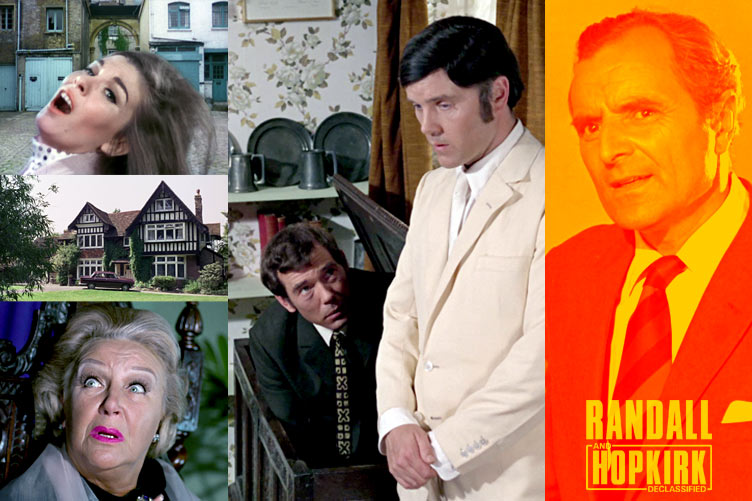
|
Images © ITV Studios, 1968 /
Composition @ Alan Hayes © 2024 |
|
Writer: Ralph Smart Director: Roy Ward Baker |
|
ORIGINAL ITC SYNOPSIS |
|
It takes a
ghost to spot a phoney medium - and the same
ghost to help his partner solve a murder
mystery.
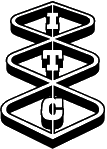
Death comes
to Anne Fenwick in a particularly callous manner
when, after the heartbreak of losing the husband
she loved, she at last finds happiness again
with the handsome, aristocratic Arthur de Crecy.
He takes her to a quiet country cottage and into
a sweet little room...
She is never
seen again, and it is her worried niece, Julia
who approaches Jeff Randall. But before his
investigations have proceeded far, Julia has
also met her death, apparently in a car
accident.
The case now
takes on a far deeper significance, and the key
to it seems to point to a spiritualist named
Madame Hanska. Anne Fenwick had been attending
her meetings. Despite objections raised by his
ghostly partner, Marty Hopkirk, Randall
persuades Marty's widow, Jean, to attend one of
Madame Hanska's seances, using an assumed name
and asking if she can contact her dead husband,
John.
But the
medium cannot contact anyone by that name, and
after the meeting, Jean is comforted by a man
who had been present and introduces himself as a
Mr Elliot. Jean feeds him with details about
her false dead husband.
This is Marty
Hopkirk's opportunity. By entering Elliot's
home, he is able to hear him speaking to Madame
Hanska over the 'phone and telling her about the
dead 'John'.
Next time
Jean goes to a seance, Madame Hanska is able to
make contact with John, describing him just as
Jean had done to Mr Elliot. The so-called
message she receives from him is that he is
worried about her finances and telling her that
she should contact his old friend Arthur de
Crecy.
The racket is
now becoming clear. Madame Hanska, Mr Elliot
and Arthur de Crecy are all in the plot to trick
lonely, wealthy widows. But how to find out
more? Once again, Marty Hopkirk demonstrates how
useful a partner a ghost can be in a private
investigation firm, and it's a very startled
phoney medium who discovers that she really is
in touch with an actual poltergeist. There's
nothing phoney on Marty's side as he makes a
ghostlike appearance to extract vital
information from Madame Hanska - information,
however, which very nearly leads to Jeff Randall
suffering the same fate as Anne Fenwick in that
sweet little room.
Luckily,
Randall has a partner whose powers are more than
mortal... |
|
|
PRODUCTION & ARCHIVE |
Production
Code:
RH/DCW/4002
Filming Dates: June-July 1968
Production Completed: Oct 1968
Recording Format: 35mm Colour Film
Archive Holding: 35mm Colour Film |
|
UK REGIONAL PREMIERES |
Anglia: Mon 5 Apr 1971, 11.00pm
ATV: Fri 28 Nov 1969, 7.30pm
Border: Wed 20 Mar 1970, 7.30pm (M)
Channel: Fri 31 Oct 1969, 7.05pm (M)
Grampian: Wed 11 Nov 1970, 8.00pm (M)
Granada: Sun 25 Jan 1970, 11.25pm
Harlech: Sun 7 Dec 1969, 3.45pm (M)
LWT: Sun 14 Dec 1969, 7.25pm
Scottish: Sat 8 April 1972,
9.30pm
Southern: Sun 21 Dec 1969, 7.25pm
Tyne Tees: Sun 25 Jun 1972, 11.30pm
Ulster: Unconfirmed
Westward: Fri 31 Oct 1969, 7.05pm (M)
Yorkshire: Fri 28 Nov 1969, 7.30pm |
(M) =
Transmitted in Monochrome/Black and White
(M*) = Transmitted in B/W due to ITV Colour
Strike |
|
CHARACTERS & CAST |
Jeff
Randall
Marty Hopkirk
Jean Hopkirk
Arthur de Crecy
Madame Hanska
Elliot
Julia Fenwick
Anne Fenwick
Rawlings
Andrews
Martha
Salesman
Police Inspector |
Mike Pratt
Kenneth Cope
Annette Andrι
Michael Goodliffe
Doris Hare
Norman Bird
Anne de Vigier
Frances Bennett
Raymond Young
Cyril Renison
Betty Woolfe
Chris Gannon
Joby Blanshard |
|
STAND-INS |
Jeff Randall
Marty Hopkirk
Jean Hopkirk |
Harry Fielder
Dougie Lockyer
Tina Simmons |
|
BLU-RAY
RESTORATION |
|
35mm Interpositive /
Optical soundtrack
(original
negative and magnetic soundtrack do not exist) |
|
EPISODE SPECIAL FEATURES |
|
Photo Gallery |
|
ORIGINAL SOUNDTRACK |
|
Selections from the incidental
score for this episode have been issued on Randall
and Hopkirk (Deceased): Original Soundtrack by Edwin
Astley,
Network, 2008 |
|
|
PRODUCTION CREDITS |
|
An ITC Production
Writer Ralph Smart
Series Theme / Musical Director Edwin Astley
Series Creator / Executive Story Consultant Dennis
Spooner
Creative Consultant - Cyril Frankel
Producer Monty Berman
Director Roy Ward Baker |
|
Production
Supervisor Ronald Liles
Director of Photography Eric Coop
Supervising Art Director Charles Bishop
Post Production Philip Aizlewood
Art Director Bob Cartwright
Editor Alma Godfrey
Production Manager Ernest Morris
2nd Unit Cameraman Stephen Dade
Sound Recordists Denis Porter and Len
Shilton
Sound Editor Guy Ambler
Music Editor Alan Willis
Casting John Owen
Set Dresser Clifford Robinson
Construction Manager Bill Greene
Camera Operator Harry Gillam
Assistant Director Colin Lord
Continuity Sally Ball
Production Buyer Peter Dunlop
Make-Up Supervisor Elizabeth Romanoff
Hairdresser Olive Mills (uncredited)
Wardrobe Supervisor Laura Nightingale
Scenic Artist A. J. Van Montagu
Stunt Co-ordinator Frank Maher
Sound Effects Cinesound
Titles Chambers + Partners
Made on
Location and at Associated British Elstree
Studios, London, England
© Copyright ITC-INCORPORATED TELEVISION COMPANY
LTD MCMLXVIII |
|
|
BUT
WHAT A SWEET LITTLE ROOM REVIEW |
|
It's still early days for the series and it's clear
that the writing and production team hasn't yet found
what really makes it tick. This is an entertaining,
effective thriller but boy, is it grim! It opens with
a callous, calculated murder and within fifteen
minutes, Jeff is identifying a corpse on a slab in the
morgue. It does however have an entertaining diversion
with Doris Hare as Madame Hanska which feels more like
it. Michael Goodliffe makes a memorable appearance but
is somewhat wasted, being absent from the narrative
for the great majority of the episode, the dirty deeds
instead being committed on his behalf by henchman
Rawlings, a singularly uninteresting character which
is not in the least bit fleshed out by the writers or
the actor. Norman Bird, however, is terrific as
Elliot, his 'in private' conducting of an imaginary
orchestra a great touch which leans into 'Avengers
eccentric' territory. Technically and artistically,
But What A Sweet Little Room is confident, even if
clearly the magic formula is still being searched for. The
innovative camerawork (see Production Brief...)
is brave but perhaps foolhardy and the location work
impressive and varied. A diverting fifty minutes viewing,
competent, solid but a tad sober and not among the
stand-out episodes of the series. |
|
|
BUT
WHAT A SWEET LITTLE ROOM DECLASSIFIED |
-
Pre-Titles Teaser...
Arthur de Crecy drives his sweetheart Anne Fenwick
down to his house in the country. Once there he
shows her into a sweet little room. She goes to look
at the view from the windowed back door and find it
is locked. She turns the key, but it still seems
jammed. Suddenly she realises the door she entered
the room through is also locked. There is the hiss
of gas jets and Anne realises her predicament. She
tries desperately to escape and sees de Crecy
outside, digging a grave. Before long, she is
overcome with the fumes and collapses.
-
Production
Brief...
But What A
Sweet Little Room
was Danger Man creator Ralph Smart's second
and final script for Randall and Hopkirk
(Deceased). He also contributed the opening
episode, My Late Lamented Friend and Partner
and had been instrumental in selling Dennis
Spooner's idea for the series to a
less-than-convinced Lew Grade at ITC. Following his
work on this episode, Smart returned to to live in
his native Australia.
-
This episode featured an experimental but
ultimately unsuccessful attempt at combining moving
background footage shot on location with moving
footage shot in studio. The sequence in question
depicted the killing of Julia Fenwick by Rawlings in
a Morris Minor 1000. At the Petersham Place location
in Brompton, South West London, a second unit filmed
the car and doubles of Julia and Rawlings, using
perpective shots from within the car as it bore down
on the girl. In the studio, the camera was dollied
in on actress Anne de Vigier, who screams and falls
out of shot, in front of a blue screen background.
When optically combined, the sequence fails to
convince, with the foreground and background sliding
around unnaturally. Despite its failure - the
process was only used once more, on the next episode
to be filmed,
For the Girl Who Has Everything,
before being abandoned - it was a brave experiment
and proof that the film makers were open to
innovative techniques. At the time that Randall
and Hopkirk (Deceased) was being filmed,
director Stanley Kubrick was pioneering the use of
motion control in his film spectacular, 2001: A
Space Odyssey; this technology was expensive and
not available to television film crews. It is quite
possible that the camera teams were aware of the
process and were trying to replicate the effect with
limited resources.
-
The sequence
involving the football match utilised stock footage
and was not shot especially for Randall and
Hopkirk (Deceased). The footage was actually
sourced from two matches, both staged at Wembley Stadium,
North West London. These were the 1963 FA Cup Final between
Leicester City and Manchester United, and the 1966
World Cup Final between England and West Germany. The tell-tale signs are the shots involving
players in white with dark shorts (West Germany)
alternating with players in white with white, blue-lined
shorts (Leicester City's away kit). The kits of Manchester
United and England were visually consistent across the two matches,
and so the editors most likely have thought the sleight
of hand would not be noticed by viewers.
Incidentally, the Occupation Road location where
Rawlings parks the black van to take advantage of
the crowd noise from the match is actually situated
next to another football stadium, Vicarage Road, the home
of Watford Football Club.
-
The 'sweet little
room' of the title was a studio set, specially
constructed for this episode. It utilised re-dressed
elements of Happy Lee's apartment set from
My
Late Lamented Friend and Partner and was
designed with the consideration in mind that it
would need to be partly
destroyed to realise the gas explosion described in
the last scene of the camera script.
- When
Marty appears to Madame Hanska at the seance, his
materialisation was achieved - in production terms -
by use of the 'Pepper's Ghost' technique that had
previously been emloyed in the first episode filmed,
My
Late Lamented Friend and Partner. Despite
the challenges encountered with the process during
the filming of that episode, in that it was
difficult to set up and Kenneth Cope had to be some
significant distance from the action and facing the
other way, it was again employed here. Quite
possibly the reason for it being used was that the
shots which use the technique are relatively static
and so they were very likely to have been easier to
set up. In this instance, the image of
Kenneth Cope in his Roman toga was reflected on
to a dark bookcase area of the set to achieve a
combined finished product. Marty's initial appearance was achieved by
simply fading up the lights on that were trained on
him and moving him towards the glass. As an aside,
the fact that the reflected image was reversed meant
that for one scene, Marty's incorrectly applied wig
had its parting on the correct, right hand side!
|
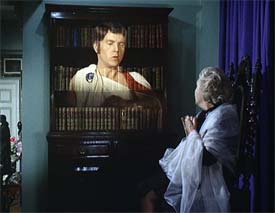
Image © ITV
Studios, 1969 |
-
The surname of
the ill-fated Julia and Anne Fenwick appears to have
caused some confusion during production, as some
cast members, including Mike Pratt, seemed not to
know how to pronounce it! The correct pronunciation
is "Fennick", but several actors opted for
"Fen-wick" instead. This is apparent from their lip
movements. Faced with a situation in which some
actors were saying the name correctly while others
were not, a decision was made to ensure that
pronunciation was consistent so as not to confuse
the viewer. Therefore, many scenes in which the name
was
spoken were redubbed in post-production, complete
with very obvious changes in acoustics as the
correct pronunciation is dubbed over. It
also appears that the film editor Alma Godfrey and
director Roy Ward Baker made a conscious choice to
try to keep the actors in question off-screen when
possible at the point of the dubbing. This would have been an
attempt to hide the replacement as much as possible,
though in the final result it still jars somewhat.
-
When Jeff
confronts De Crecy in his apartment towards the end
of the episode, Pratt continues mispronouncing the
name ('Fen-wick'), but Michael Goodliffe's response
is intriguing. He too uses 'Fen-wick' when feigning
his ignorance and pretending not to know her (and
his line, as with Pratt's, has been re-dubbed).
Then, when Jeff reveals that he basically knows
everything about the scam and De Crecy realises that
he is wasting his time by lying, Goodliffe then
reverts to the correct ('Fennick') pronunciation and
so this line was not re-dubbed. This suggests that
Goodliffe might have made a subtle decision to use
Randall's mispronunciation ('Fen-wick') as a sly
means of feigning ignorance, before then revealing
that he does know the woman (and also the correct
pronunciation of her name). This offers a further
possibility that this Fennick/Fen-wick detail was
part of the original script, and was jettisoned as
potentially confusing, but this is perhaps unlikely.
Either way, Goodliffe (perhaps unwittingly)
contributed to the confusion over the woman's name,
and so a decision must have been made to use dubbing
to ensure uniform pronunciation.
-
Filming of this episode took
place in June and July 1968.
-
Post production work was
completed in late October 1968.
-
On Location...
An impressive set of filming locations for this
episode: the striking Edge Grove School; Water End
in Hertfordshire; the War Memorial at North Mymms; a
road running beside Watford Football Club's Vicarage
Road stadium and central London locales in Brompton,
Hampstead, Kensington, Lambeth and Paddington.
'Ewhurst Manor', the
location of Arthur de Crecy's house, which contains
the 'sweet little room' of the title, was tracked down
by Alan Hayes of Randall and Hopkirk
(Declassified) in March 2012 after years of
searching by fans of the series. Also uncovered was
Ewhurst Manor's rather fruity sideline! See
The Hunt for De
Crecy's for the juicy titbits and a detailed
look at the house and estate.
More details on all the locations featured in this
episode in
Locations: But What A Sweet Little Room.
-
Haunting Melodies... The music that we
see Elliot conducting in his apartment was a
specially composed piece by Edwin Astley, and not,
as suggested, a true classical piece.
-
Seeing Things... But What a Sweet Little Room received its first UK
broadcast on Friday 31st October
1969, when it was transmitted in monochrome by the Westward and
Channel ITV regions.
-
It was first shown in colour on
ITV on Friday 28th November
1969 at 7.30pm when it aired on the ATV and
Yorkshire regions.
-
Trivia...
One notable pointer that this is an early
episode is that Jeannie Hopkirk isn't yet working as
receptionist in Jeff's office. When we see her at
the offices in But What A Sweet Little Room, she is
merely "dropping by".
-
Marty is very
possessive about Jean and seems to expect her to
remain faithful to him in her widowhood, for the
rest of her life. Today, this seems quite an
outdated concept, but in the immediate post-war
years in Britain, it was something that was very
much expected of a bereaved young wife.
-
As in the opening
episode,
My
Late Lamented Friend and Partner,
and for some of the subsequent episode,
For the
Girl Who Has Everything, Kenneth Cope's wig is
on back to front with its parting on the left-hand
side. The soles of his shoes, which were seen to be
black in the first episode, were whitened for this
episode.
-
When Marty
appears to Jeff from inside the cupboard and tries
to prevent Jean becoming involved in Jeff's
investigation, this reveals to us for the first time
in the series the near-side of the office set.
-
When Marty takes over Madame Hanska's seance, he
materialises wearing a Roman toga complete with a
red sash and a large blue brooch. This is the only
time in the series where we see Marty (as a ghost) out of his
traditional white suit.
-
At
35 minutes 39 seconds into But What a Sweet Little Room,
we
get a great view of the companies sign at the
entrance which shows the other
businesses that were based in the same property as Randall and
Hopkirk.
Jeff, Marty and Jean's professional
neighbours were:
Clive Murray Theatrical Agency
Les Freds Recording Co. Ltd
Georgi Kalyopolous, Continental Imports
Raclinco Ltd (Toys, Novelties Wholesale Only)
Barry Solomons (Turf Accountant, Investment
Consultant)
Peephole Publications - Retirement Weekly
|
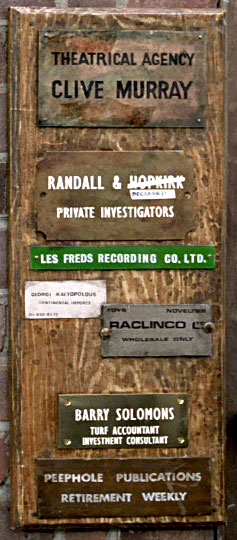
Image © ITV
Studios, 1968 |
-
Only You,
Jeff?
Marty manifests himself to the phoney spiritualist,
Madame Hanska (Doris Hare). Marty is surprised to find
that she is actually a good
subject, despite the fact that Madame Hanska has always
considered herself to be nothing other than a fake.
Marty later comments to Jeff that,
"Actually, her aura was rather good. I had no
trouble materialising." It would seem that she
has a latent ability for genuine clairvoyance.
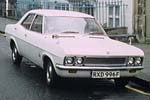 |
1968 Vauxhall
Victor FD 2000
Registration RXD 996F
Driven by Jeff Randall |
Also appeared
in:
Randall and Hopkirk (Deceased) -
used extensively throughout the series
Department S - 'The Last Train to
Redbridge', 'The Man from X' |
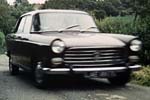 |
1966 Peugeot 404
Registration LAE 887E
Driven by Arthur de Crecy |
|
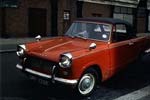 |
1964 Triumph Herald 1200
Convertible
Registration CKY
230B
Driven by Julia Fenwick |
Also appeared
in:
Randall and Hopkirk (Deceased) -
'A Sentimental Journey' (as a background vehicle on
the studio backlot) |
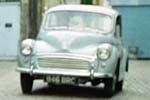 |
1957 Morris
Minor 1000
Registration 846 BRC
Driven by Rawlings |
|
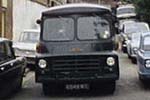 |
Morris
LD Van
Registration 6549 MT
Driven by Rawlings |
Also appeared
in:
The Champions - 'The Gilded Cage'
Bedazzled (1967 film) |
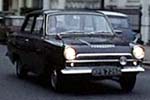 |
1965 Ford Cortina
Deluxe MkI
Registration KPB 726C
Driven by Elliot |
|
|
Images © ITV
Studios, 1968 |
-
Seen It All
Before? The set used for
the interior of Julia Fenwick's well-to-do residence
was from stock and had been used previously in many
other ITC series and would be redressed on several
occasions for episodes of Randall and Hopkirk
(Deceased).
-
The room in which
Madame Hanska hosted her seances was a redressed
version of set used as Sorenson's study in
My
Late Lamented Friend and Partner.
-
Cock-ups... At 13
minutes and 36 seconds, in the set piece sequence
depicting Rawlings mowing down Julia Fenwick in a
Morris Minor at the Petersham Place SW7 location, he
starts out at the eastern end of the street in front
of a blue door and blue garage door and sets off
after Julia, who is shown walking in a westerly
direction. Suddenly, despite it being implied in the
edit that neither Julia or the car has turned
around, she and the Morris are bearing down on the
same, eastern end of the road with the blue door and
blue garage door...
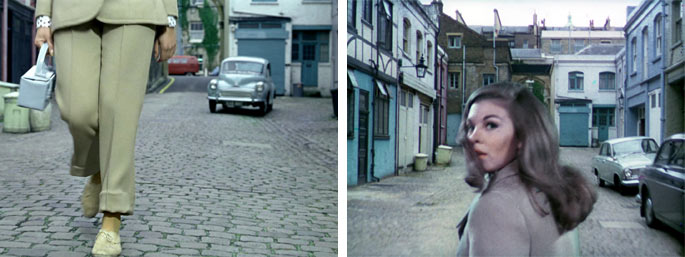 |
|
Images ©
ITV Studios, 1968 |
|
-
At 13 minutes and 52 seconds,
having hit Julia, the car crashes into an
untidy array of boxes, sacking and rubbish bins on
the right in front of the blue door. In
the previous shot from the driver's perspective as
the car bears down on the unfortunate Julia, these
items are nowhere to be seen.
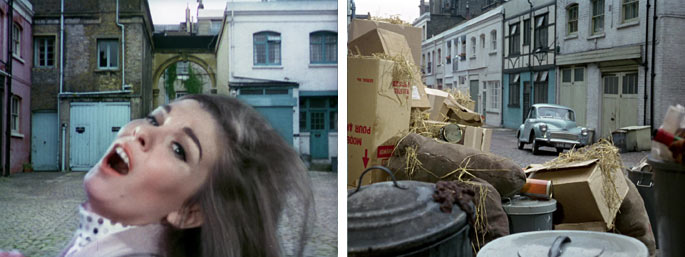 |
|
Images ©
ITV Studios, 1968 |
|
-
In the same
sequence, the drunken salesman is seen in the
Morris' passenger seat in the studio blue-screen
shots, but is absent in the on-location shots where
the car clearly has just one person inside. Were that not
enough, the Morris Minor 1000 that Rawlings is
driving can be seen parked up at the roadside to the
right in the background of the back projection shot!
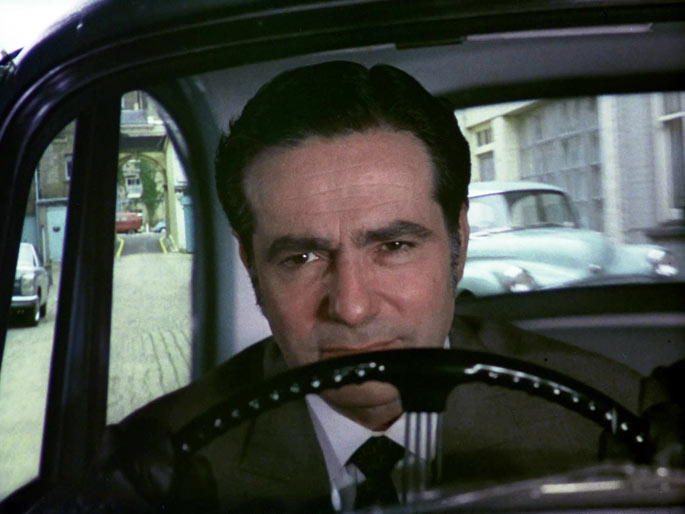 |
|
Image ©
ITV Studios, 1968 |
|
-
At 37 minutes and 55 seconds,
we see footage of a football match. This is stock
footage from the 1963 FA Cup Final between Leicester
City and Manchester United. However, the last shot
used was taken from the 1966 World Cup Final between
England and West Germany - the difference being that
while the Manchester United and England kits were
visually very similar (red shirts, white shorts, red
socks), the colour of the Leicester City and West
Germany shorts varied (Leicester: white with a
vertical blue stripe, West Germany: black).
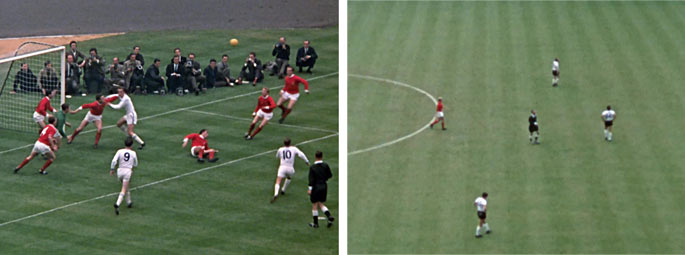 |
|
Images ©
ITV Studios, 1968 |
|
-
Actor Cyril
Renison, who portrayed Andrews in this episode, is
mistakenly credited as 'Cyril Renision' in the end
credit sequence. Naughty Chambers+Partners!
-
And Finally...
The filming location for Arthur de Crecy's country
cottage proved exceptionally difficult to track down
and we now know why: it was demolished in the early
1970s.
'Ewhurst Manor', 37 Furzehill Road in Borehamwood was
used by several ITC productions as a filming
location, but it had a seamier side. It was a
favoured location for the photographing of young
ladies in various states of undress and the filming of
'glamour' films by a variety of photographers and
film makers, the most famous of these being George Harrison
Marks. The owner of the house, Mrs Doris Clifford
was reputedly a great
champion of Marks' endeavours and he would shoot many 8mm
films at the 18th century manor house including
Nightmare at Elm Manor (1963), Photo Session
(1963) and Visit from
Venus (1964). Mrs Clifford encouraged film
makers to use her property and she requested a
'nominal charge' for filming and photographic
sessions. For further details, please see
Features: The
Hunt for De Crecy's.
Plotline: Scoton Productions / ITC UK Transmissions by Simon Coward
and Alan Hayes
Review by Alan Hayes
Declassified by Alan Hayes
with thanks to Geoff Dodd, Alys Hayes, James Owen Heath,
Andrew Pixley and Claire Saunders
All timings given on this page relate to the Blu-ray editions of this episode |
|
Back to
Programmes Index
Forward to The Girl Who Has
Everything
Locations: But
What A Sweet Little Room
Features: The Hunt for De Crecy's
|
|
|
Back to Top |
|



